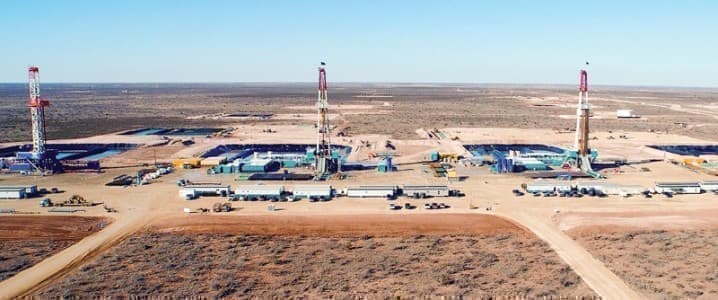Rising oil prices are encouraging U.S. shale producers to put up for sale non-core assets to streamline operations and reduce debt. Property sales have accelerated this year as exploration and production companies now look to develop and hold assets that would boost their cash flow generation instead of production volumes, as was the mantra before the 2020 crisis. Since the start of the year, producers and private equity firms have been selling acreage across the U.S. shale patch to another group of producers willing to complement their portfolios with adjacent property, which would allow them to expand operations at lower costs.
Several deals have been announced in recent months. More are coming, analysts say.
According to industry sources and investment bankers who spoke to Reuters’ David French, companies have already put up for sale or are getting ready to market property worth a total of over $12 billion across the shale patch.
U.S. oil and gas deal activity started at a slow pace in the first quarter. Nevertheless, it is expected to pick up as the year progresses as producers proceed with a rationalization of portfolios to save costs, reduce debts, and get the most bang for their buck from their assets.
Property Deals Have Accelerated In Recent Weeks
The biggest Q1 deal in the U.S. shale patch was Norway’s major Equinor exiting the Bakken play by selling all its assets and associated midstream assets to Grayson Mill Energy for $900 million. The sale was backed by venture capital provider EnCap Investments. Equinor’s rationale for the sale was to deploy the proceeds to more competitive assets in its global portfolio.
According to energy analytics company Enverus, four of the five biggest deals in the U.S. upstream in Q1 were property deals, with Equinor’s sale leading, followed by Ovintiv’s sale of its Eagle Ford assets to Validus Energy for $880 million.

“Proceeds will significantly accelerate the achievement of our debt reduction target and allow us to pay off near-term debt maturities with cash on hand. Our 2021 outlook is strong and we expect to generate significant free cash flow for the fourth consecutive year,” Ovintiv CEO Doug Suttles said, commenting on the deal.
Sustainable free cash flow and debt reduction were also key for Tulsa-based Laredo Petroleum, which announced last month the purchase of the assets of Sabalo Energy. At the same time, it also announced the sale of 37.5 percent of its developed producing reserves in the Reagan and Glasscock counties in Texas to an affiliate of Sixth Street Partners.
“Upon closing, we will be positioned for sustainable Free Cash Flow generation and significant deleveraging, have more than 30,000 highly productive, contiguous net acres in Howard County and a near-term pathway to increasing our oil cut to more than 50% from the current 30%,” said President and CEO Jason Pigott.
Not Everyone Is Flocking To The Permian
While many companies are focused on streamlining and making the most of their Permian operations, one company exited the most prolific shale basin to focus on the Williston Basin. Oasis Petroleum said in May that it would sell its entire Permian Basin position for $481 million.
“The successful conclusion of our Permian divestiture process allows us to bring substantial value forward from an asset that was difficult to scale, strengthens our balance sheet from already peer-leading levels, and allows us to focus our attention on driving significant value from our world-class Williston acreage position, where we see great upside opportunity and long-term running room,” CEO Danny Brown said.
Oasis Petroleum’s deal suggests that U.S. shale firms are no longer holding acreage in the Permian simply because it is in the Permian. Companies are now prioritizing assets that they can develop at lower costs. They are also prioritizing assets that have the potential for more free cash flow in the longer term.
Related: Oil Prices Fall Following Large Fuel Inventory Build
Yet, Oasis Petroleum may remain an outlier in its complete Permian exit.
“Repositioning to a non-Permian pure-play makes strategic sense for Oasis given their focus on the Bakken combined with investor preferences for low cost, streamlined operations. However, there are few other E&Ps that would fit that pattern,” Andrew Dittmar, senior M&A analyst at Enverus, told Midland Reporter-Telegram’s Oil Editor Mella McEwen.
More Deals On The Horizon
Some of the largest public U.S. oil companies are also looking to sell acreage. These include Exxon, Chevron, Occidental, ConocoPhillips, Callon Petroleum, and Whiting Petroleum, according to Reuters sources and marketing documents Reuters has seen.
According to Enverus’ Dittmar, private equity is expected to feature in future acreage deals, while there is also more room for corporate mergers and acquisitions, even after last year’s consolidation drive.
“Going forward, private equity should continue to play an important role in upstream M&A both on the acquisition side targeting legacy areas that are being sold as public companies narrow their focus and as potential targets for public companies to buy using their now higher-priced stock as payment like Pioneer did to buy DoublePoint,” Dittmar said in Enverus’ Q1 deals analysis.
“While many of the marquee names in the public E&P space in the Permian found deals in 2020, there is additional room to combine operations among small and mid-size Permian names as well as in areas like the Appalachian Basin and Bakken that have yet to see anyone play a dominant role as a consolidator,” he said.
By Tsvetana Paraskova for Oilprice.com
More Top Reads From Oilprice.com:
- Oil Could Reach $80 This Summer, But There’s A Catch
- Russia Expands Its Influence In Major Iraqi Oil Fields
- China’s Oil Imports To Drop After Refinery Margins Near $0


















